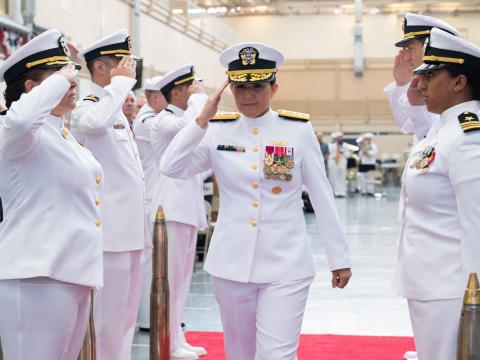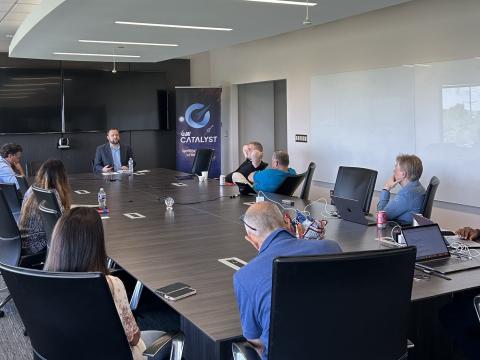Gravely Sailors Assisting in Interoperability Assessment
The stars were in perfect alignment or it was the perfect storm of open schedules. Call it what you will, but when technology assessors and warfighters meet for one week in one place, the results are the same: a mutual learning experience that will benefit warfighters on the front lines.
The stars were in perfect alignment--or it was the perfect storm of open schedules? Call it what you will, but when technology assessors and warfighters meet for one week in one place, the results are the same: a mutual learning experience that will benefit warfighters on the front lines. Members of USJFCOM's Joint Systems Interoperability Center (JSIC) are hosting four members of the Pre-Commissioning Unit (PCU) Gravely, an under-construction guided missile destroyer, this week to gather warfighter input on some next-generation technology they are examining. This may seem like a no-brainer from a logical standpoint, but in reality, the current high-tempo operational environment makes this tough to accomplish. With a little knowledge of schedules and a bit of coordination, however, PCU Gravely shipmates had the opportunity for some hands-on training at JSIC. This first-of-its-kind collaboration specifically involved the NGA's Image Product Library (IPL) and the GCCS. PCU Gravely personnel welcomed the opportunity to see and train on equipment that they will be using when the ship is in service. Commissioning is scheduled to occur in September 2010. OS2 Floyd Bussey, USN, particularly enjoyed the chance to familiarize himself with the imagery. All of the Gravely's crew involved in the work with JSIC were enthralled with the prospect of "pushing buttons" on a capability that will eventually be fielded for use by U.S. CENTCOM. Frank Hunt, also a JSIC staff member, emphasizes that the GCCS and IPL assessment is not yet complete. Initially, JSIC found system problems between the data request system and the GCCS. Now, they have identified an interoperability issue between the IPL and the GCCS. Because it is preferable to find these glitches before capabilities are in the field, Hunt likes the idea of bringing warfighters into the JSIC. "Maybe something is more intuitive or we find something that doesn't work. Two out of three times, we can work with [in this case] the NGA to address the issue and fix it on site. When intelligence analysts and targeteers are in the field, they must have this imagery fast and it must be accurate," he states. JSIC's job is to identify interoperability discrepancies, not to fix them, Hunt emphasizes. JSIC staff member Nick O'Dawe explains that the work the organization conducts is equivalent to the Consumer Reports assessment of military equipment. Having user input in the form of real warfighters is a plus, he states. The JSIC team would like to see more of this type of collaboration with warfighters in the future. To do that, however, schedules need to align again, as they did this time. The collaboration is mutually beneficial, but the question remains: Is the operational tempo so rigorous these days that important efforts such as these are nearly impossible?




Comments